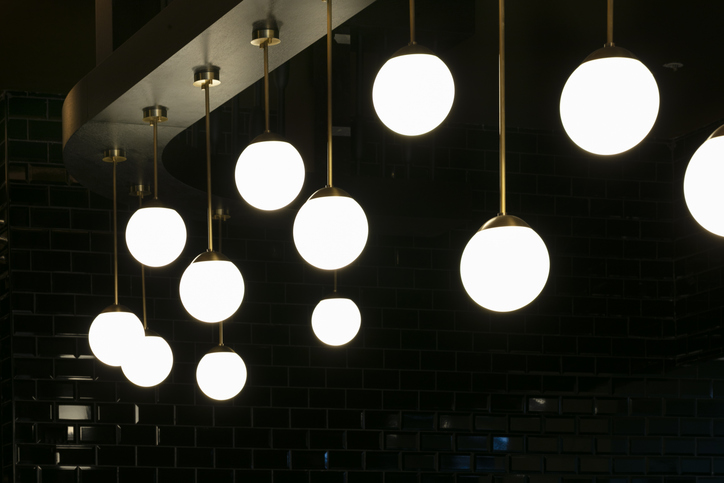As sustainability becomes an increasingly important factor in home design, many homeowners are seeking ways to reduce their environmental impact while still creating beautiful and functional living spaces. One of the most effective ways to achieve a greener home is by focusing on lighting and design installations that emphasize energy efficiency, longevity, and environmental responsibility. Whether renovating an existing space or starting from scratch, incorporating sustainable lighting and design elements not only reduces energy consumption but also creates a more comfortable and aesthetically pleasing environment. In this article, we will explore these installations that can help you create a sustainable home while making a positive impact on the planet.
1. Energy-Efficient LED Lighting:
One of the easiest and most impactful ways to create a sustainable home is by switching to energy-efficient LED lighting. LED bulbs consume significantly less energy than traditional incandescent or fluorescent bulbs, providing the same level of brightness at a fraction of the cost. They also have a much longer lifespan, meaning they need to be replaced less frequently, which reduces waste. LED lighting is available in a variety of styles and temperatures, making it easy to incorporate into any room in your home. With their low energy consumption and long-lasting performance, LEDs are an essential part of a sustainable lighting design.
2. Solar-Powered Outdoor Lighting:
Solar-powered lighting is an excellent way to enhance the exterior of your home while harnessing the power of the sun. Solar lights use solar panels to convert sunlight into electricity, eliminating the need for electricity from the grid. These lights can be used to illuminate pathways, gardens, patios, and other outdoor spaces. Solar-powered lighting is both cost-effective and environmentally friendly, as it reduces your reliance on fossil fuels and helps lower your energy bill. With minimal maintenance required, solar lights are a low-maintenance, long-lasting solution for any eco-conscious homeowner.
3. Smart Lighting Systems:
Incorporating smart lighting systems into your home design can enhance convenience while promoting energy savings. Smart lighting allows you to control the brightness and color of your lights remotely through a smartphone or voice assistant, allowing you to adjust the lighting according to your needs. Motion sensors can also be integrated, ensuring that lights are only on when a room is in use. By optimizing energy usage, smart lighting systems reduce wasted electricity and help lower overall energy consumption, making them a valuable tool for sustainable home design.
4. Natural Light Optimization:
Maximizing the use of natural light is an essential aspect of sustainable home design. By strategically placing windows, skylights, and glass doors, homeowners can reduce their reliance on artificial lighting during the day. Natural light not only helps lower energy bills but also contributes to better indoor air quality and overall well-being. Consider installing large windows or light wells in common areas like living rooms and kitchens to maximize sunlight exposure. Additionally, incorporating reflective surfaces and light-colored walls can help distribute light more evenly throughout the space, creating a bright, airy atmosphere.
5. Energy-Efficient Appliances and Fixtures:
Lighting is just one part of a sustainable home, and incorporating energy-efficient appliances and fixtures throughout your design is equally important. Choosing appliances with Energy Star ratings ensures that they consume less energy while still providing high performance. From refrigerators and dishwashers to low-flow showerheads and faucets, selecting energy-efficient options reduces your home’s overall energy consumption. Additionally, these eco-friendly choices help lower utility bills and minimize your carbon footprint. Investing in energy-efficient appliances and fixtures is a smart, long-term way to create a more sustainable and cost-effective home.
6. Sustainable Materials in Interior Design:
When designing a sustainable home, the materials you use for furniture, flooring, and finishes can have a significant impact on the environment. Opt for materials that are renewable, recyclable, or locally sourced, such as bamboo, reclaimed wood, or cork. These materials are not only eco-friendly but often more durable and long-lasting than their conventional counterparts. Additionally, many sustainable materials have a natural aesthetic that complements modern design styles, contributing to a beautiful and environmentally responsible interior. Choosing sustainable materials for your home design helps reduce waste, supports responsible manufacturing practices, and minimizes the environmental impact of your space.
7. Green Roofs and Living Walls:
For a truly eco-friendly home design, consider incorporating green roofs and living walls. These installations provide a variety of environmental benefits, such as improved insulation, increased biodiversity, and the reduction of urban heat islands. A green roof, which is covered in plants, can help regulate temperature by providing natural cooling during hot weather and insulation during colder months. Living walls, or vertical gardens, are another way to bring nature indoors while improving indoor air quality. Both green roofs and living walls contribute to a more sustainable, energy-efficient home while offering an innovative and aesthetically pleasing design element.
8. Sustainable Landscaping and Outdoor Design:
Sustainable landscaping plays an essential role in creating an eco-friendly home. By choosing native plants, xeriscaping, and water-efficient irrigation systems, you can reduce water consumption and minimize maintenance. Native plants require less water and fertilizer, making them ideal for creating a low-maintenance, sustainable outdoor environment. Additionally, incorporating features such as rainwater collection systems, composting areas, and permeable paving helps manage runoff, reduce water waste, and promote biodiversity. Sustainable landscaping not only enhances the curb appeal of your home but also contributes to environmental conservation by creating a more resilient and self-sustaining ecosystem.
Creating a sustainable home design goes beyond simply choosing energy-efficient lighting; it involves considering every aspect of your space, from lighting and appliances to materials and landscaping. By incorporating eco-friendly lighting systems, optimizing natural light, and selecting sustainable materials and appliances, you can reduce your home’s carbon footprint while creating a comfortable and stylish living environment. Embracing sustainable design elements not only helps protect the environment but also offers long-term financial savings and a healthier home. With the right lighting and design choices, you can enjoy a beautiful, sustainable home that reflects your commitment to a greener future.
Are you ready to make your home more sustainable? Start with smart lighting and design choices and take the first step toward creating a more eco-friendly living space. Call us at Cline Electrical Service at 540-380-3886 for more information.







